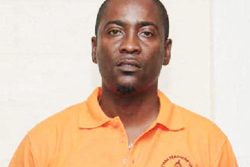Dear Editor,
I am gravely concerned by the way the government has pushed forward its carbon credits plan without respect for our traditional ways of making decisions as communities. Let me say first that I am not against giving money to our villages, and I think it is fair that we should be compensated for our role in protecting our forests. In fact, if the carbon credits revenues are to be seen as compensation for protecting the forests, then 15 percent begins to feel like crumbs from the table. As Toshao Lemmel Thomas of Kamarang told the Vice President and assembled toshaos this week, we ought to be applauded just as much as the government, if not more, for this.
But this week, there was a sudden directive for all toshaos to travel to Georgetown so that the government could announce their payments to Indigenous communities. I would like to know why there was such a rush, and why the toshaos could not have more notice to discuss this with their communities. In connection with this meeting, the government released additional information about how the process of disbursing and spending the money will work. I welcome this transparency. I am also glad to see that villages will be in charge of determining their own priorities for spending the money. However, many questions remain to be answered. Is the issuance of cash to be considered the “opt-in” described in the LCDS document? Who really owns the “carbon rights” from our lands and what does our law say about this (for example, does section 55 of the Amerindian Act apply to forest carbon credits)? What role will the Ministry of Amerindian Affairs have in approving Village Sustainability Plans?
Even though ministers and officials in the government speak all the time about the extensive LCDS consultation process, the LCDS is still not understood by many in our communities. It is not our plan, and I worry that a plan we do not understand and do not collectively agree to adopt could be used to control our communities. I would like to see the government give time for each toshao to meet with their respective village to individually discuss and endorse the LCDS, if they choose, in their village general meeting. They should have the resources they need to answer these questions and any others that they have, and they should have enough time to meet and discuss among themselves in accordance with their customary decision-making processes, not in a rush. Toshao Lemmel also said that the 15 percent figure raises some questions, such as why that number was chosen, how it was settled on, and whether the Indigenous communities had meaningful opportunities to participate in that decision. The Vice President responded that about 15 percent of Guyana’s forests are on Indigenous titled land.
In one sense, this answer makes sense. I have read in one report by the Guyana Extractive Industries Transparency Initiative that “by the Absolute Land Titles of their lands, Indigenous Peoples own the forests, timber, and Non-Timber Forest Plants or Products (NTFPs) on their lands and the forest carbon rights.” So it is only right that the communities are paid for it. But a separate question is, did those communities agree to sell what they owned in the first place? I do not think that they did.
In another sense, the Vice President’s answer is even more troubling. As my district council, the South Rupununi District Council, reminded the public in a statement this week, only a fraction of our traditional lands – the ones we have lived on for generations – are covered by titles given by the government. The government does not control the size of our traditional lands, but it does control the size of our titled lands. Is this not a conflict of interest? We know that the best way to protect Guyana’s forests is to recognize the land rights of Guyana’s first peoples. Yet the Vice President all but told the toshaos that if the government titled more Indigenous land, they would need to pay more of their carbon credit revenues to the communities. In this situation, how can we expect that the government will fairly attend to our title and extension applications? On this point, consider the situation of our brothers and sisters in Isseneru Village. Last year, the Inter-American Commission on Human Rights affirmed that Isseneru has rights to all of its traditional lands and recommended that the government legally recognize those rights. So far, the government has been silent on these important recommendations. I support what the SRDC said: “We call on the Government to live up to its climate ambitions by legally recognizing our traditional lands. We call on the world that is watching to hold all Governments to account and to respect Indigenous peoples’ rights in their climate actions.”
Sincerely,
Tony James
Chief Kokoi





